
What is the problem
About 70-80% of smartphones on the market have a battery capacity in the region of 3000 mAh and are charged from 5-volt current sources of 1 A. And if you look at the characteristics of their batteries, it turns out that in all cases, charging is carried out in a mode of one and a half below the standard prescribed in specs.
For example, for the vast majority of Li-ion batteries with a capacity of 3-4 thousand mAh, the standard charge current is 0.5 C (the ratio of charge current to full capacity). Those. for a 3000 mAh model, this is 1.5 A. In addition to standard values, the maximum charge current is indicated in the specifications. And for the same absolute majority of batteries, it is 1 C (3 A in our specific example). At the same time, there are models on the market for which the standard and maximum currents can be significantly higher.
Here are a couple of concrete examples. This screenshot is from the characteristics of the LG BL-42D1F battery (which is placed on the LG G5 and a number of other models):
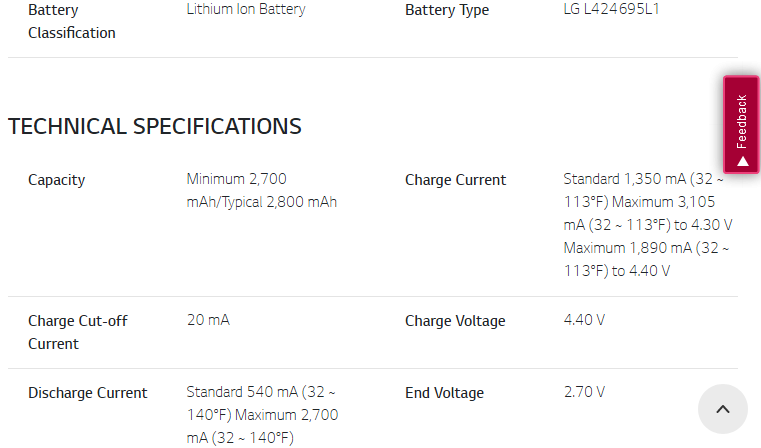
Please note that the maximum charge current is 1.1 C, i.e. just a little over 3 A at a five-volt source.
Here is an example of another “battery” LG BL-45B15:

Everything here is similar to the previous battery.
More examples
There is one obstacle to studying the characteristics of smartphone batteries - very few detailed information is available in open sources. I managed to find incomplete specs only for LG, and I gave them higher. But for the batteries of the most common form factor, the 18650 detailed specs are full, since they are mass commercial products.
Let's take a look at one of the popular options - Sanyo UR18650-NSX :
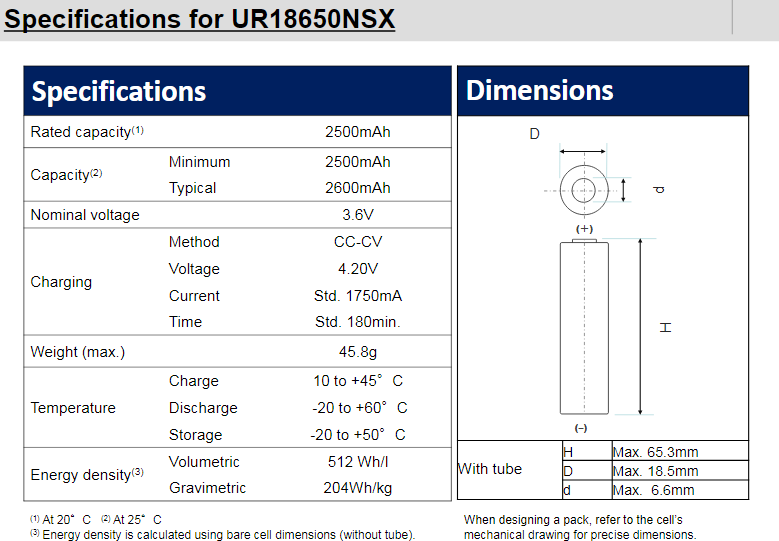
The standard charging current is almost 1.8 A, which is 0.7 C.
And here is an example from Samsung - INR18650-30Q :

Here we have currents from 1.5 A to 4 A (1.33 C)! Moreover, if you always charge with the maximum current, and discharge with a high load of 15 A, then the degradation in capacity after 300 cycles will be slightly more than 25%, which is relatively small. Well, if the discharge current is more gentle, for example, 30 times less (as in a typical smartphone), you don’t have to worry about fast aging.
What is true fast charge?
Fast charging is where the currents are 2 C or more. And there are areas where this is no longer news. For example, in the same power tool. Bosch and other manufacturers have been offering batteries charging 3000 mAh batteries in 35 minutes (20 minutes to 80%) for 6-7 years. It seems to me that in addition to high currents in the first phase, this time is achieved by reducing the second phase of the CV charge. As a result, the batteries gain only ~ 90-95% of the nominal capacity, but then you do not wait until they turn blue.

Here, for example, specs of Samsung "cans" 18650, working in such modes:

For a capacity of 2000 mAh, the maximum charge current is 4 A, which is 2 C. And the maximum charge time is 50 minutes. Why not 30 minutes? Let me remind you that charging Li-ion batteries consists of two phases. In the first phase, a current limit is set. As the battery is saturated and reaches its maximum regulated voltage value, the process goes into the recharging phase, at which the voltage is fixed, and the current gradually decreases. Here is how this process can be depicted for 1C mode:
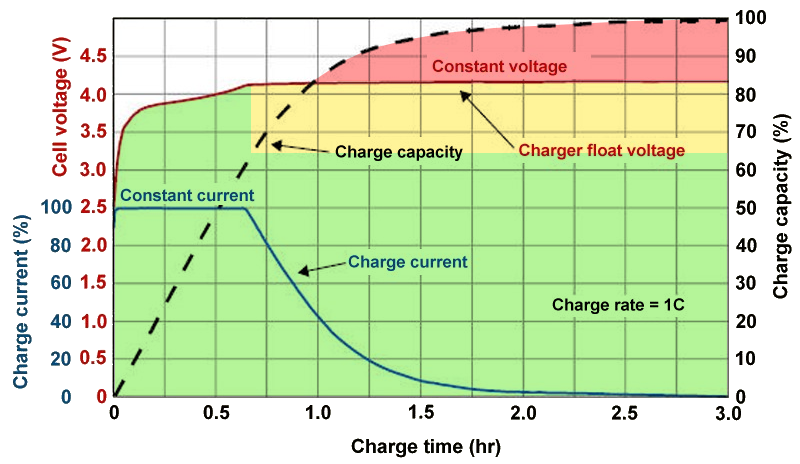
For 2 C, the graph will look similar, but it will be compressed in time. Plus, different batteries may have different characteristics, and the CV phase (with constant voltage) can start at different levels of accumulated charge.
So when you are told about cool fast charging, which in fact operates with currents up to 1 C (and on the market you can count models capable of more on the fingers), just know that in other areas it was twice as cool six years ago, let with some reservations.
Why don't manufacturers fuss
In theory, they are baked about the durability of the battery. High charge and discharge currents accelerate degradation. About seven years ago, here’s a chart like this from batteryuniversity.com:
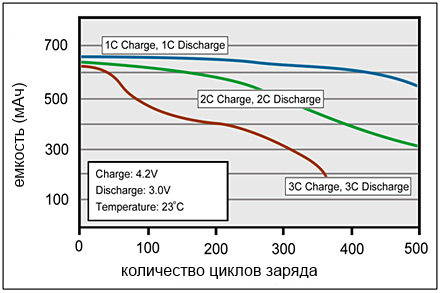
It shows the reduction in capacity depending on the charge and discharge currents. However, now the situation has improved. In addition, smartphones do not have such wild discharge currents.
For the sake of experiment, I took a pair of 2.5-year-old smartphones with 3000 mAh batteries that have been used in the tail and mane all this time: the Huawei P9 Lite with ordinary single-amp charging and the Samsung Galaxy S8, which always charged only in 9 V and ~ 1.5 A. And measured an old tester the amount of energy that went into charging.
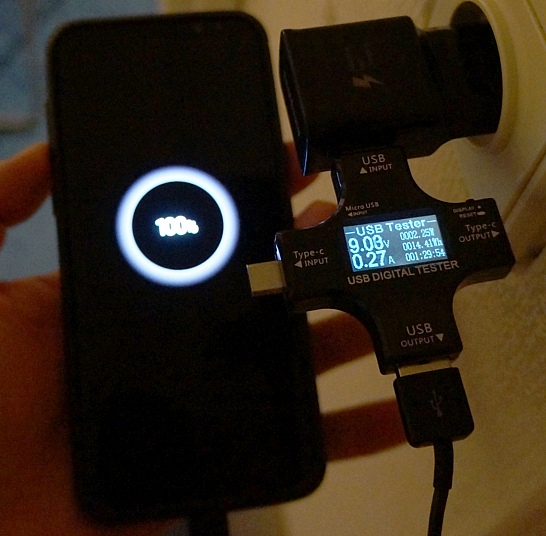
Galaxy S8, discharged to zero and charged in the off state, “ate” 14.4 Wh for an hour and a half. In this case, the nameplate capacity of its battery is 13.2 Wh. And taking into account the fact that part of the taken from the outlet was scattered on the cable, we get almost zero degradation in capacity.
UPD: for completeness, a graph of the temperature during fast charging of 9 V and 1.6 A. The peak temperature is 35 ° C, which is far from the maximum temperature of 45 ° C. Those. The charging cycle goes exactly according to the schedule, without overheating and stops.
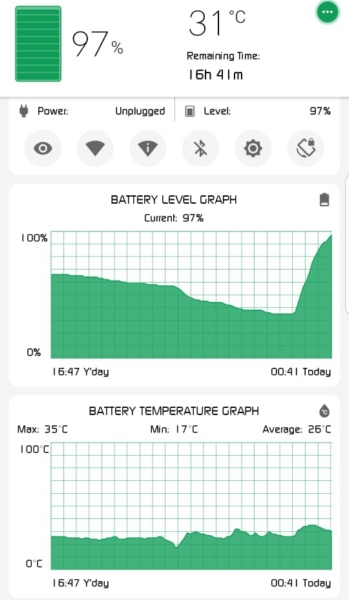
In other words, for ~ 1000 complete fast charge and discharge cycles, the battery lost almost nothing. No, actually there are losses, I just did not set out to make precision measurements and did not measure its capacity after purchase. But, in any case, the degradation in capacity is negligible.

At P9 Lite the picture is similar. It took 3.5 hours to fully charge, and the tester measured 12.1 Wh. However, with this measurement, it was connected after the cable, directly to the smartphone. It can be stated that there are some losses in the capacity, but again they are completely insignificant.
What is the conclusion? The battery, which was charged for almost three years only in the fast 1 C mode, practically did not lose anything, as well as the battery, charged with currents below the standard.
What is the essence of the claims
Here's another picture of the poor P9 Lite, who has been drinking a sip of 0.96 A for an hour and a half, gaining 60% of the charge of his battery 3000 mAh. In this case, ~ 0.2 A goes to its current work in sleep mode.
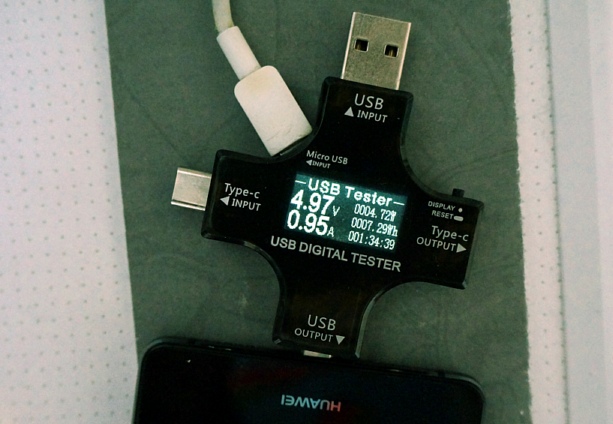
Those. the battery gets about 0.8 A, from which we get a charge mode of ~ 0.25 C! Most likely, this is half the standard mode of 0.5 C, defined for him by specs.
In other words, the battery life of 2000 mAh has passed many years ago. Namely, it was under them that the unofficial standard of “charging” appeared at 1 A. And it would be normal if manufacturers by default would allow charging with currents of at least 1.5 A. At the same time, 2 A, which at current capacities will give a mode of 0.7 C.
But the question is, who then will buy Quick Charge, which will be in fact only ~ 20% percent faster?
Someone will now ask what if most of the charges are now 1 A, what will happen if smartphones are allowed to take 2 A? Yes, there will be nothing. Before starting charging, the smartphone selects the protocol, and if the source is ancient and does not respond to requests, it will test it and select the maximum allowable mode. For example, the same smartphones with conventional single-ampere charges can take currents of 0.4, 0.5, 0.7 and 1 A (the exact list of modes depends on the manufacturer of the smartphone). If the source or line does not drop voltage under load, the maximum current will be taken.
So, if we discard the tube segment up to 6 thousand rubles at Yandex.Market, where they save on everything and put cardboard batteries, we get 806 models, of which only 154 support Qiuck Charge or their proprietary technologies. Of the 652 remaining, according to my estimates, there will be 10% of those who already know how to take 2A each (yes, the process went on here), but for the other ~ 580 models, for the most part, a real obstacle to the 1.5 or 2 amp mode marketing.